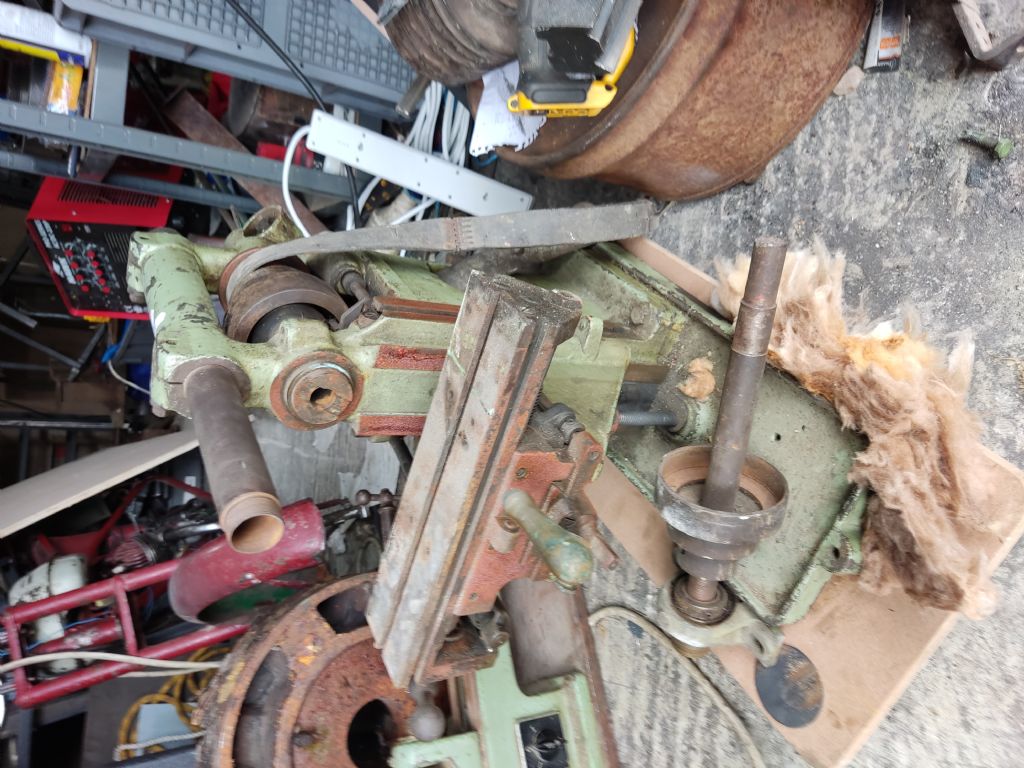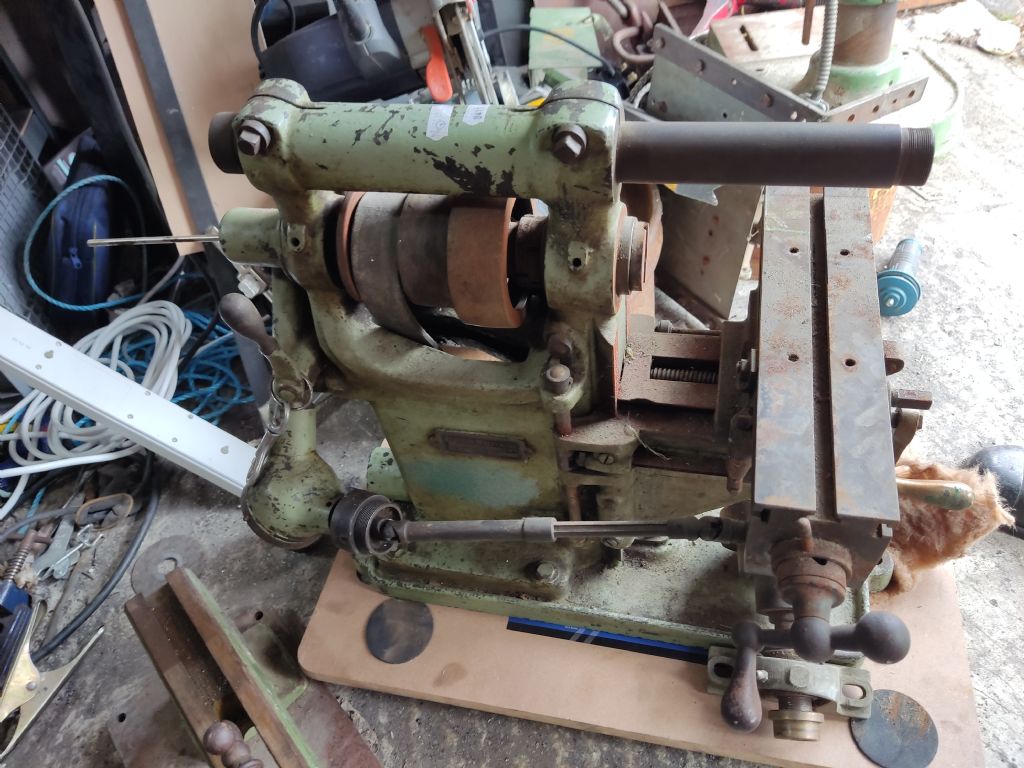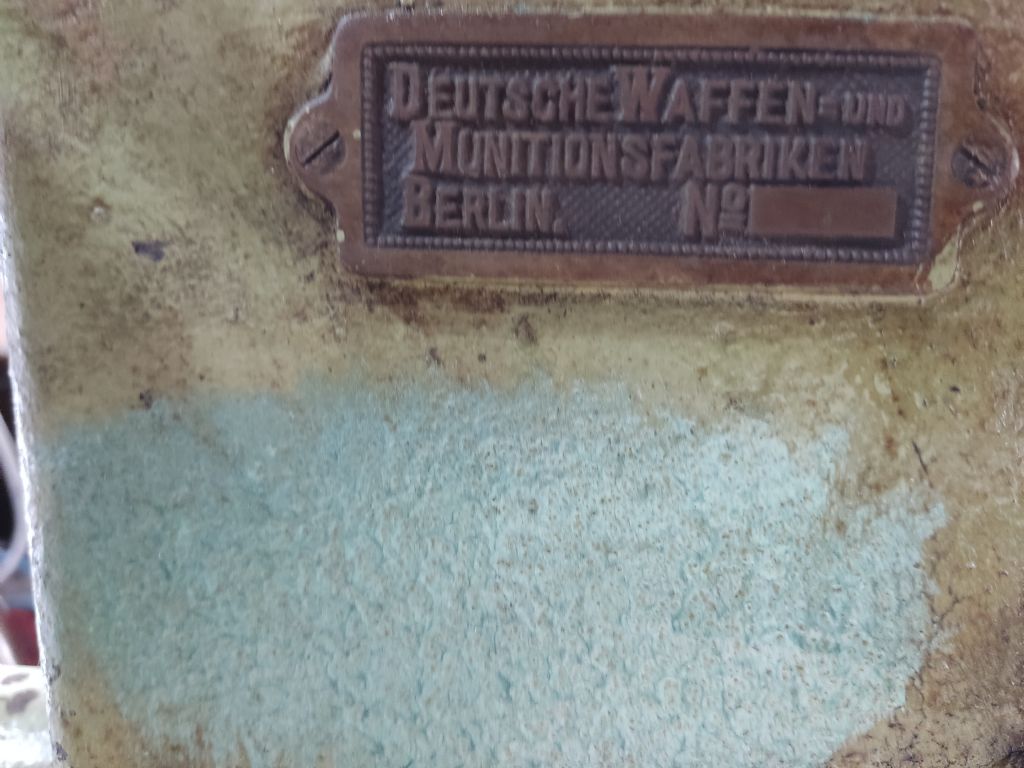I've just examined the Lathes.co Denbigh section again, and its text reveals this:
"Long a common practice in many spheres of industry, Denbigh also made batches of un-branded milling and other machines for distribution by third parties. … some … millers differed from the regular Denbigh specification with some obviously … to a customer's particular requirements."
(ack. Tony Griffiths)
None of his illustrations, apparently all from catalogues, show the left-hand drive, single-slotted table though some captions refer to that under photos of machine with clearly, 3-slot tables (as mine has).
Rainbows' rescuee might have been exported legitimately to Germany, before Hitler came to power or at least before any such exports stopped. Although not giving dates, lathes.co does state the H-series milling-machines were produced from pre-WW2 onwards.
My reasoning:
"…. stolen by an englishman circa 1918. "
Too early for Denbigh H-series mills although Denbigh and DWM were both long established by then.
So what does Wikipedia tell us? Firstly that the name-plate was not a Nazi-government armaments organisation but a commercial company heavily involved in supplying the armed services except between 1922 and the later 1930s. It had been founded as a gun-maker, in 1896. ("Waffen" is a military, but not Nazi, word.)
According to that Wikipedia article the German firm was banned from armaments production after WW1 (though still did in small, secretive ways). After a period of take-over and re-naming, it reverted to its original name in 1936, in Third Reich days; though it had become Quandt-owned in 1929.
'
So when that milling-machine Rainbows found was actually made, and where it has been all these years, is still something of a puzzle, not least because Mr. Griffiths tantalisingly does not tell us when the model was first made – except that the first, the very basic little H1, was created in the 1920s. Nor does he say when Denbigh was established. Maybe you have to buy one of his catalogue facsimiles to find out more closely!
Piecing things together, I suggest this example, which looks capable of being restored to fully serviceable condition, could have been a legitimate export to Germany in the late 1920s or early 1930s before the DWM name was revived. The DWM plate could have been added later.
The name-plate is not of a Third Reich organisation as such, leaving two possibilities if the firm at some stage had bought the machine new and not looted it in WW2 from an occupied land.
DWM may have owned and used the milling-machine all along, later possibly helping arm the regime; or had sold it but left their asset-plate on it, during the company's inter-War upheavals including the munitions ban.
'
To summarise, this machine could have been bought innocently by former-DVM in the 1920s or early-30s, between the machine's introduction and Quandt eventually reviving the name.
Since the DWM plate/s (I think there is one on both sides) are where Denbigh embossed its trade-mark, but not name, and given the above Denbigh marketing details, it's tempting to wonder if any name or mark lies below it or them. The plates may have been old ones that had languished in a store for that gap of up to about 14 years.
'
After WW2 what had been DWM became a railway rolling-stock builder under a new name with the same DWM initials. What became eventually left of it, became absorbed into an Austrian firm now making robotics equipment.
'''''
While at it, I went and re-measured the table screw on my Denbigh H4. Yes, it is of 6tpi, not 4mm lead, eventually confirmed after inconclusive attempts with a DTI, by measuring longer distances by pencil-mark and a word-processing rule's twelfths-inch scale. (24 turns of the handle, which has no dial, moves the table 4".)
From above, it's possible this odd pitch was to special order – for the printing industry perhaps?
Nigel Graham 2.







